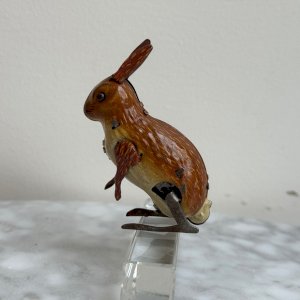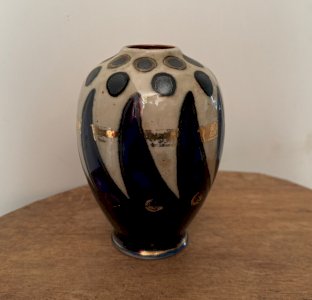- Sell Now
- Home
-
FURNISH
All STORAGE FURNITURE • Wardrobe • Chests of drawers, Chiffonnier • Sideboard • Shelves, Bookshelves • File cabinet • Sewing Furniture • Bar cabinet • TV Stand • Trunk, Chest TABLE & BEDSIDE TABLE • Dinner Table • Coffee table, side table, end table & Bedside • Console, Pedestal table & Selette • Serving Table, Trolley • Card Table • Draper's counter & table SEAT • Sofa • Armchair • Chair • Stool • Bench • Daybed • Beanbag & Footrest • Deckchair & Outdoor DESK, SECRETARY, DRESSING TABLE GARDEN LOUNGE BEDDING • Bed • Bedhead • Cradle, Moses basket CRAFT FURNITURE, WORKSHOP • Workbench • Stool, Ladder, Step • Easel & Trestle SCREEN PIANO
-
DECORATE
All TO PUT • Sculpture, Statuette • Vase & Planter • Dame Jeanne, Bonbonne & Flacon • Bridal globe, Dome • Pin tray, Ashtray • Candlestick & Candle • Photo frame • Stone, Fossil, Mineral • Earth Globe MIRROR WALL DECORATION • Painting • Engraving & Illustration • Poster • Tapestry • Wall Frame • Plate & Sign • Juju Hat & Wall Paniel • Mask • Hunting Trophy • Other object to hang CLOCK, PENDULUM & ALARM CLOCK ARRANGEMENT • Jar, Box & Case • Basket, Wastebasket & Crates • Magazine Rack & Vinyl Holder • Display & Spinner • Coat hook & Coat rack • Furniture Valet & Mannequin • Towel Holder • Suitcase & Travel Bag • Bottle Rack • Umbrella holder BATHROOM OFFICE • Mail holder • Bookends • Sulphide & Paperweight • Stationery FIREPLACE ACCESSORIES HOBBIES • Vintage Sport • Music • Vintage device • Smoking Item • Militaria, Ancient weapon • Miniature Vehicle • Game, Playing Cards • Collection object & Curiosity BIRD CAGE RELIGION, SPIRITUALITY
- TEXTURE
- ILLUMINATE
-
ACCOMODATE
All TABLE & SERVING • Plate • Silverware • Knife Holder • Glass • Bowl, Mug, Cup • Bowl, Ramekin & Cup • Dish, Cup & Salad Bowl • Tray, Basket & Server • Table Mat • Pitcher, Carafe, Bottle, Tea & Coffee Jug • Ice Bucket • Salt & Pepper shakers, Oil & Vinegar shakers • Sugar and jam maker • Gravy boat • Butter dish • Egg cup • Terrine OLD BALANCE CUTTING BOARD GRINDER CASSEROLE, SAUCEPAN & PAN KITCHEN UTENSIL & ACCESSORY
- TINKER
- KIDS
- Jewelry & Accessories
Login
Related Products
Description
AUTHENTIC HAIRDRESSING TOURANGELLE TOURAINE DAILY LIFE 7 FLOWERS SYMBOLIC EMBROIDERY LACE FOLKLORE FOLKLORIQUE SUIT H2271 Do not hesitate to browse my account, I offer other models for sale.All our headdresses come from a succession, without major defects, otherwise time which is passed, let us note on the top and in front as you can see irregularities on some holes.N 'being not specialist we do not know the origin of this cap, do not hesitate to let us know what you know. as presented. For the state thank you for detailing the photos and zooming in. The photos are an integral part of the description Dimensions: Height: 13 cm Width: 19 cm I remain at your disposal for any questions. generations are passed on, everything is not heritage; it is built over time, between the past and the present. Heritage only has meaning as a bridge between a culture of the past which testifies to the past and another that is yet to come. Headdresses testify, they are readings of women's lives, of their identity, of the great moments of their existence: childhood, puberty, marriage, births, work, ceremonies, death of loved ones and daily life. t is also to measure the effects of a globalization over several centuries which gradually dissolves dress codes, identity, to open up to the city and industry, then to fashion and today to a world standard. With a simple veil, a small cotton cap or a sophisticated hennin, every woman, whatever her social or religious affiliation, had to cover her hair… Some dates: 1789: the abolition of privileges opens access to the port silk, lace and embroidery became possible for all women, regardless of their social background. 1870: the absence of men forced women to save time: needle cutouts disappear to make room for mechanical lace. Anecdote: the wearing of the short skirt would have been initiated by the Vendée in order to attract the few remaining men.At the beginning of the XIXth century, the simple utilitarian role played by the cap worn by the peasant women, will replace a real code cultural and social identity of the woman. This evolution will begin with the restoration, around 1815 and the war of 1914 will end the decline. Daily life Symbol of 7: Highly symbolic number: Seven animals of each species saved from the flood, seven lamps who are the seven spirits of God, seven head of the beast of the apocalypse, seven capital sins, seven virtues required of the woman at her marriage before 1890: faith, hope, charity, temperance, justice, strength, prudence… To each one to choose ... The headdress is made up of four main elements: The headdress bottom, generally the most decorated part, was protected from the hair by a headdress, the hair was pulled up in a bun. The pass, cord placed around the cap. The lite, in tulle, lace or embossed muslin bordering the pass. This part was called “straw” because the corrugation was carried out, after starching, with rye straws. The ribbon, brocaded silk, faille or moire, it is used to hide the drawstring. Before the appearance of embroidery, headdresses were not always worn with ribbons.
Réf :
#16077
Color(s) : White
Comments
Related Products
Description
AUTHENTIC HAIRDRESSING TOURANGELLE TOURAINE DAILY LIFE 7 FLOWERS SYMBOLIC EMBROIDERY LACE FOLKLORE FOLKLORIQUE SUIT H2271 Do not hesitate to browse my account, I offer other models for sale.All our headdresses come from a succession, without major defects, otherwise time which is passed, let us note on the top and in front as you can see irregularities on some holes.N 'being not specialist we do not know the origin of this cap, do not hesitate to let us know what you know. as presented. For the state thank you for detailing the photos and zooming in. The photos are an integral part of the description Dimensions: Height: 13 cm Width: 19 cm I remain at your disposal for any questions. generations are passed on, everything is not heritage; it is built over time, between the past and the present. Heritage only has meaning as a bridge between a culture of the past which testifies to the past and another that is yet to come. Headdresses testify, they are readings of women's lives, of their identity, of the great moments of their existence: childhood, puberty, marriage, births, work, ceremonies, death of loved ones and daily life. t is also to measure the effects of a globalization over several centuries which gradually dissolves dress codes, identity, to open up to the city and industry, then to fashion and today to a world standard. With a simple veil, a small cotton cap or a sophisticated hennin, every woman, whatever her social or religious affiliation, had to cover her hair… Some dates: 1789: the abolition of privileges opens access to the port silk, lace and embroidery became possible for all women, regardless of their social background. 1870: the absence of men forced women to save time: needle cutouts disappear to make room for mechanical lace. Anecdote: the wearing of the short skirt would have been initiated by the Vendée in order to attract the few remaining men.At the beginning of the XIXth century, the simple utilitarian role played by the cap worn by the peasant women, will replace a real code cultural and social identity of the woman. This evolution will begin with the restoration, around 1815 and the war of 1914 will end the decline. Daily life Symbol of 7: Highly symbolic number: Seven animals of each species saved from the flood, seven lamps who are the seven spirits of God, seven head of the beast of the apocalypse, seven capital sins, seven virtues required of the woman at her marriage before 1890: faith, hope, charity, temperance, justice, strength, prudence… To each one to choose ... The headdress is made up of four main elements: The headdress bottom, generally the most decorated part, was protected from the hair by a headdress, the hair was pulled up in a bun. The pass, cord placed around the cap. The lite, in tulle, lace or embossed muslin bordering the pass. This part was called “straw” because the corrugation was carried out, after starching, with rye straws. The ribbon, brocaded silk, faille or moire, it is used to hide the drawstring. Before the appearance of embroidery, headdresses were not always worn with ribbons.
Réf :
#16077
Color(s) : White
 English
English  Français
Français 




























